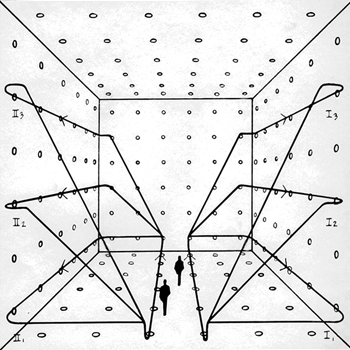Solve the Differential Equation #y'' - 4 y' + 4y = 2 e^(2x)#?
5 Answers
Explanation:
Method of Undetermined Coefficients
Start with the homogeneous equation and the complementary solution :
This has characteristic equation:
Repeated roots mean that, in lieu of the usual solution
And because the non-homogeneous equation already has a
Putting these into the equation:
The general solution is:
Now applying the IV's:
And from the second IV,
The solution is
Explanation:
This is a second order linear, non-homogeneous differential equation.
The general solution can be written as
The caracteristic equation is
We have a double root
The solution without the LHS is
For the particular solution, we try
Putting these in the equation
So, the particular solution is
The general solution is
Finally, we have
The two other solutions quite clearly demonstrate how to solve the complementary solution of the homogeneous equation.
# y'' - 4y' + 4y = 0 #
As this is fairly standard text book stuff which solves the Auxiliary equation to form a guaranteed solution based of the roots of the equation
The interesting part is find the solution of the particular function, and where did the magic "lets try"
Basically it is down to practice & experience but there is a solid method to find the particular solution using the Wronskian. It does, however, involve a lot more work:
Having established that the solution of the homogeneous equation is (see other answers):
# y_c = (Ax+B)e^(2x) #
# \ \ \ = Axe^(2x) + Be^(2x) #
The reason this form of solution works is that the two individual components
Once we have two linearly independent solutions say
# ay'' +by' + cy = p(x) #
is given by:
# y_p = v_1y_1 + v_2y_2 \ \ # , which are all functions of#x#
Where:
# v_1 = -int \ (p(x)y_2)/(W[y_1,y_2]) \ dx #
# v_2 = \ \ \ \ \ int \ (p(x)y_1)/(W[y_1,y_2]) \ dx #
And,
# W[y_1,y_2] = | ( y_1,y_2), (y'_1,y'_2) | #
So for our equation:
# p(x) = 2e^(2x) #
# y_1 \ \ \ = xe^(2x) => y'_1 = 2xe^(2x) + e^(2x) #
# y_2 \ \ \ = e^(2x) \ \ => y'_2 = 2e^(2x) #
So the wronskian for this equation is:
# W[y_1,y_2] = | ( xe^(2x),,e^(2x)), (2xe^(2x) + e^(2x),,2e^(2x)) | #
# " " = (xe^(2x))(2e^(2x)) -(e^(2x))(2xe^(2x) + e^(2x)) #
# " " = (e^(2x))(2xe^(2x) -2xe^(2x) - e^(2x)) #
# " " = -e^(4x) #
So we form the two particular solution function:
# v_1 = -int \ (p(x)y_2)/(W[y_1,y_2]) \ dx #
# \ \ \ = -int \ ((2e^(2x))(e^(2x)))/((-e^(4x))) \ dx #
# \ \ \ = int \ 2 \ dx #
# \ \ \ = 2x #
And;
# v_2 = \ \ \ \ \ int \ (p(x)y_1)/(W[y_1,y_2]) \ dx #
# \ \ \ = int \ ( (2e^(2x))(xe^(2x)) ) / (-e^(4x)) \ dx #
# \ \ \ = int \ -2x \ dx #
# \ \ \ = -x^2 #
And so we form the Particular solution:
# y_p = v_1y_1 + v_2y_2 #
# \ \ \ = (2x)(xe^(2x)) + (-x^2)(e^(2x)) #
# \ \ \ = e^(2x)(2x^2-x^2) #
# \ \ \ = x^2e^(2x) #
Which is the same particular solution as the other answers produced, leading to the general solution:
# y(x) = y_c + y_p #
# \ \ \ \ \ \ \ = Axe^(2x) + Be^(2x) + x^2e^(2x) #
Which then leads to the same specific solution of the other answers.
Another approach using the fact that
Explanation:
Mary Boas teaches this in a way I not see very widely used, but which also obviates the need for the experienced guesswork.
If we note that
So it already looks like the eigenvalue form you'd get from a linear system, but is non-homogeneous. Then we can say that
Integrating factor
(You can even apply the
So, it's another Integrating Factor:
And then apply the IV's as before.
Boas is my personal favourite maths book, but it's for scientists, not mathematicians. But this is a real good way to go at repeated eigenvalues, which are tricky.
Explanation:
Laplace Transform
We have the IV's at
From Standard Tables, here using Mary Boas 3rd Ed, L6 and L18, pp469-470:



